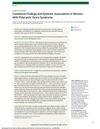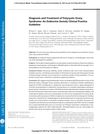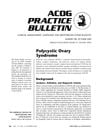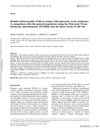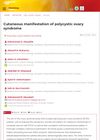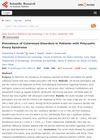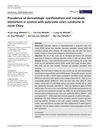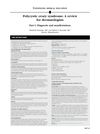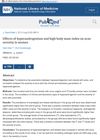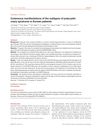Care for Adolescents With Polycystic Ovary Syndrome: Development and Prescribing Patterns of a Multidisciplinary Clinic
October 2021
in “
Journal of Pediatric and Adolescent Gynecology
”

TLDR In teens with Polycystic Ovary Syndrome and obesity, issues related to metabolism, skin, and mental health are common, and a clinic with various specialists can provide care for most of these problems.
The study "Care for Adolescents With Polycystic Ovary Syndrome: Development and Prescribing Patterns of a Multidisciplinary Clinic" describes the patient population and prescribing patterns in a multidisciplinary clinic for adolescent girls with polycystic ovary syndrome (PCOS). The study involved a retrospective chart review of 92 patients aged 11-24 years, seen from 2014 to 2018. The results showed that metabolic syndrome features were common among the patients, with 26% having prediabetes hemoglobin A1c (>5.6%), 83% having a high-density lipoprotein (HDL) <50 mg/dL, 40% having a systolic blood pressure >120 mm Hg, and 43% having an alanine aminotransferase level of >30 U/L. Dermatologic findings included acne in 93% of patients, hirsutism in 38%, acanthosis nigricans in 85%, hidradenitis suppurativa in 16%, and androgenic alopecia in 2%. Additionally, 33% of the patients had a diagnosis of depression or anxiety. The most commonly prescribed medications were topical acne preparations (62%), followed by estrogen-containing hormonal therapy (56%) and metformin (40%). The study concluded that in adolescents with PCOS and obesity, metabolic, dermatologic, and psychologic co-morbidities are common, and a multidisciplinary clinic model provides care for most aspects of PCOS.
